Medium chain length polyhydroxyalkanoates consisting primarily of unsaturated 3-hydroxy-5-cis-dodecanoate synthesized by newly isolated bacteria using crude glycerol
- PMID: 26988857
- PMCID: PMC4797247
- DOI: 10.1186/s12934-016-0454-2
Medium chain length polyhydroxyalkanoates consisting primarily of unsaturated 3-hydroxy-5-cis-dodecanoate synthesized by newly isolated bacteria using crude glycerol
Abstract
Background: Our study aimed to search for novel bacteria capable of producing polyhydroxyalkanoates (PHAs) using crude glycerol residue obtained from biodiesel production in which used cooking oils were the substrates.
Results: Newly isolated bacteria from soils in Thailand were screened for the efficient production of PHAs from crude glycerol. The bacterial strains were cultivated on glucose, refined glycerol, crude glycerol, or various cooking oils (canola oil, palm oil, soybean oil, sunflower oil, corn oil, grape seed oil, olive oil, rice bran oil, camellia seed oil) for growth and PHA production. The effects of the total organic carbon (TOC) concentration and the mole ratio of carbon to nitrogen were investigated in batch cultivation. (1)H NMR, two dimensional-(1)H-correlation spectroscopy (2D-(1)H-COSY) and (13)C NMR analyses confirmed four bacterial strains were capable of producing medium-chain-length PHAs (mcl-PHAs), consisting of 3-hydroxyoctanoate (3HO) and 3-hydroxy-5-cis-dodecanoate (3H5DD), from crude glycerol. On the basis of phenotypic features and genotypic investigations, the bacterial strains were assigned as: ASC1, Acinetobacter genus (94.9% similarity); ASC2, Pseudomonas genus (99.2% similarity); ASC3, Enterobacter genus (99.2% similarity); ASC4, Bacillus genus (98.4% similarity). The highest amount of mcl-PHAs, 17.5 ± 0.8 g/L (content 61.8 ± 3.3% wt), with 3HO (14.7 ± 2.2 mol %), 3H5DD (85.3 ± 2.2 mol%), and a total biomass of 32.3 ± 0.3 g/L, was obtained from Pseudomonas sp. ASC2 in batch cultivation after 36 h. The mcl-PHAs recovered had a number-average molecular weight (M N) of 3.6 × 10(4) Da. Homopolymeric 3H5DD was obtained when the cultivation time was prolonged to 96 h.
Conclusions: Novel PHA-producing strains were isolated and identified. These bacterial strains are able to produce mcl-PHAs from crude glycerol. The mcl-PHAs produced contained a high percentage of 3H5DD, which suggests their future application as softeners mixed with other biomaterials. The unsaturated side chain of 3H5DD monomers containing double bounds offers additional potential for improving the properties of the mcl-PHAs or extending their applications to the food industry.
Keywords: 3-Hydroxy-5-cis-dodecanoate (3H5DD); 3-Hydroxyoctanoate; Acinetobacter sp.; Bacillus sp.; Crude glycerol; Enterobacter sp.; Medium chain length PHAs; Pseudomonas sp.; Used cooking oil.
Figures
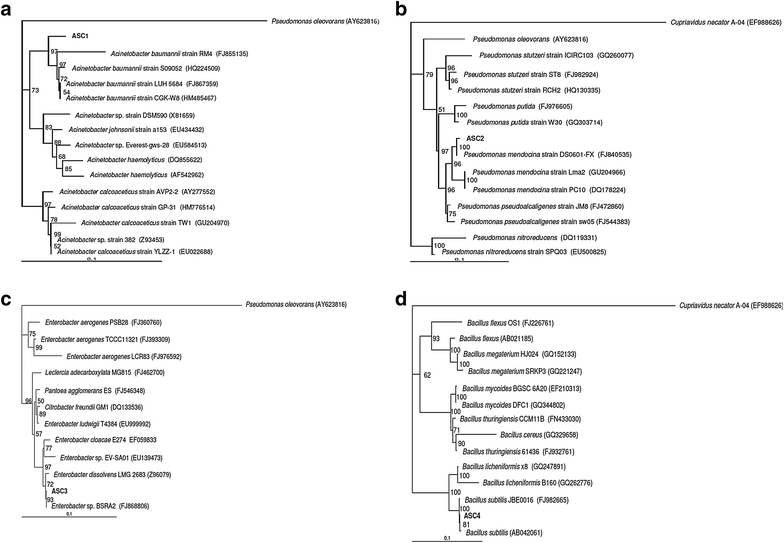
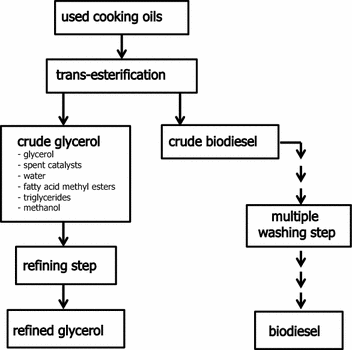
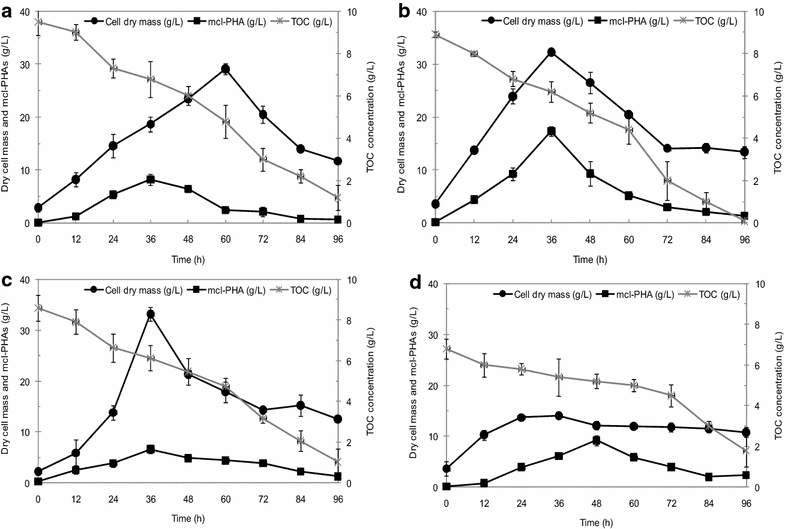

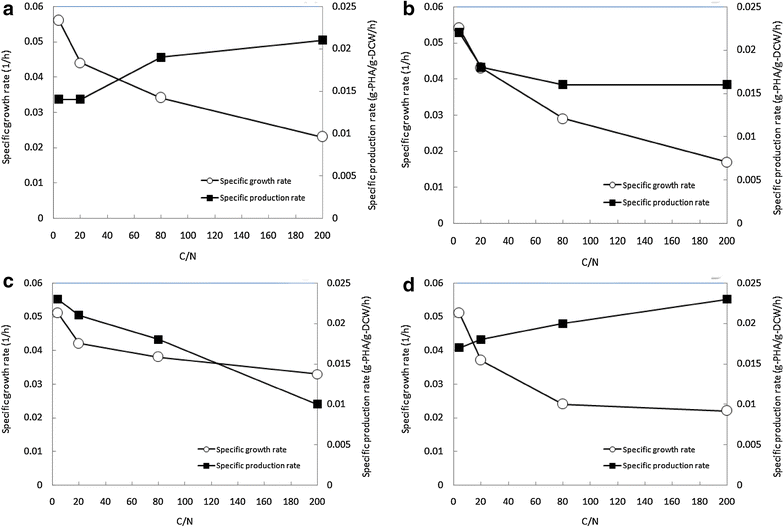
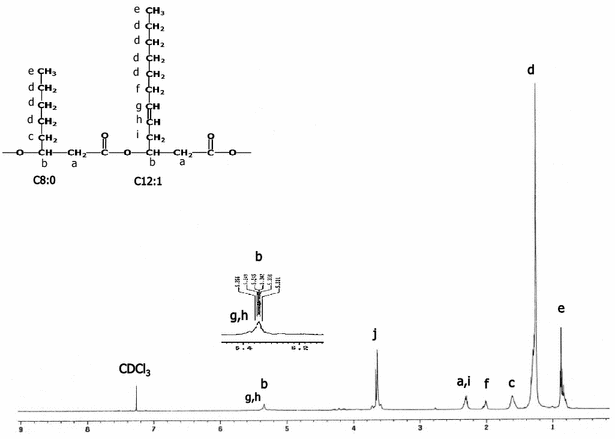
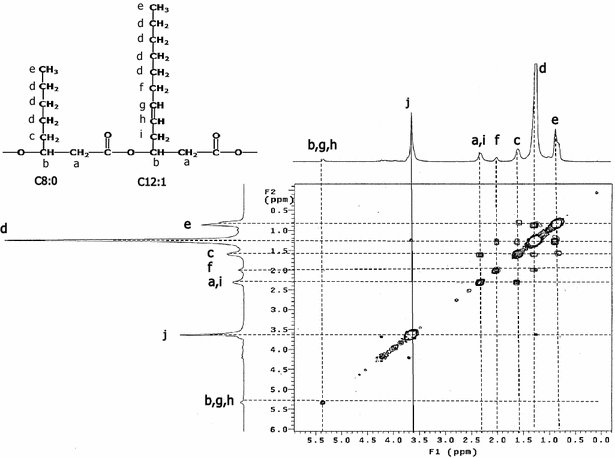
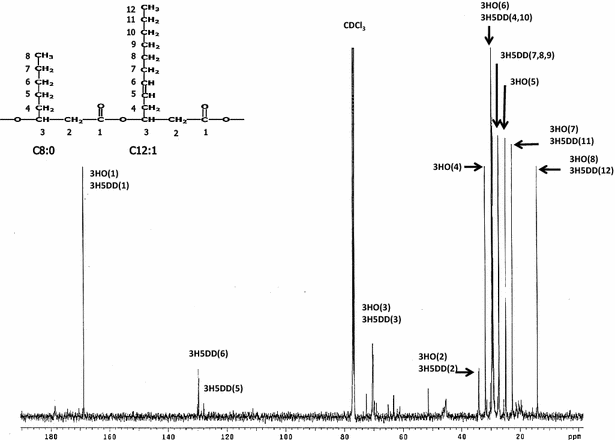
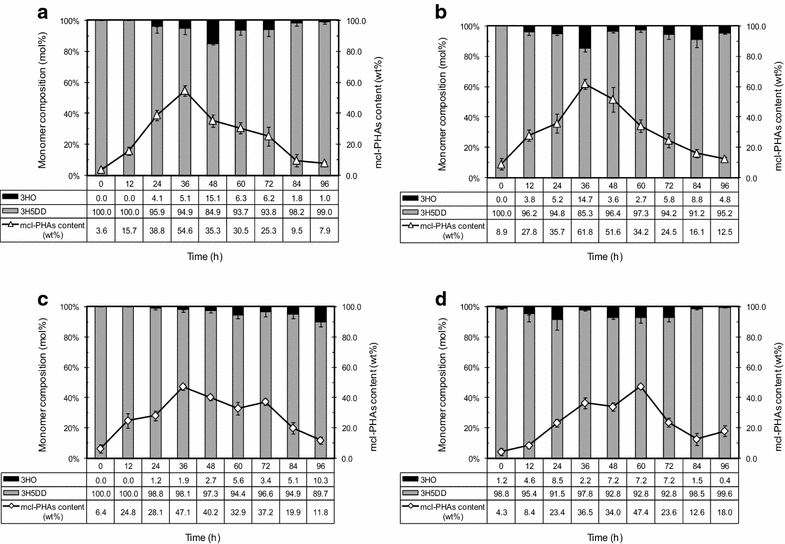
References
-
- United Nations. Report of the World Commission on Environment and Development, General Assembly Resolution 42/187. 1987. (http://www.un-documents.net/a42r187.htm), Accessed 11 Jan 2016.
-
- Akiyama M, Tsuge T, Doi Y. Environmental life cycle comparison of polyhydroxyalkanoates produced from renewable carbon resources by bacterial fermentation. Polym Degrad Stab. 2003;80:183–194. doi: 10.1016/S0141-3910(02)00400-7. - DOI
-
- Kim S, Dale BE. Lifecycle assessment study of biopolymer (polyhydroxyalkanoates) derived from no-tilled corn. Int J Life Cycle Assess. 2005;10:200–210. doi: 10.1065/lca2004.08.171. - DOI
-
- Harding KG, Dennis JS, von Blottnitz H, Harrison STL. Environmental analysis of plastic production processes: comparing petroleum based polypropylene and polyethylene with biologically-based poly-β-hydroxybutyric acid using life cycle analysis. J Biotechnol. 2007;130:57–66. doi: 10.1016/j.jbiotec.2007.02.012. - DOI - PubMed
Publication types
MeSH terms
Substances
LinkOut - more resources
Full Text Sources
Other Literature Sources
Molecular Biology Databases

